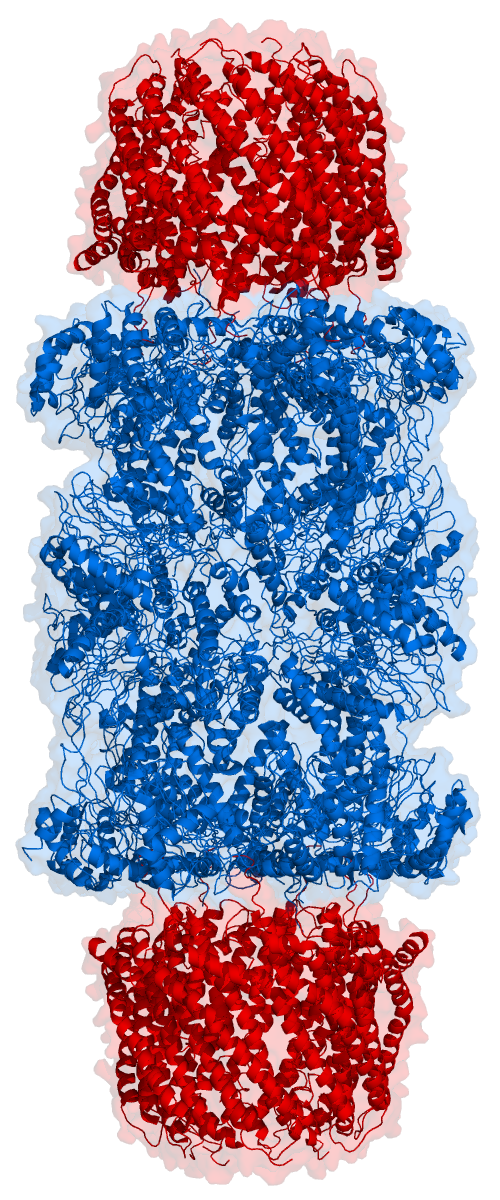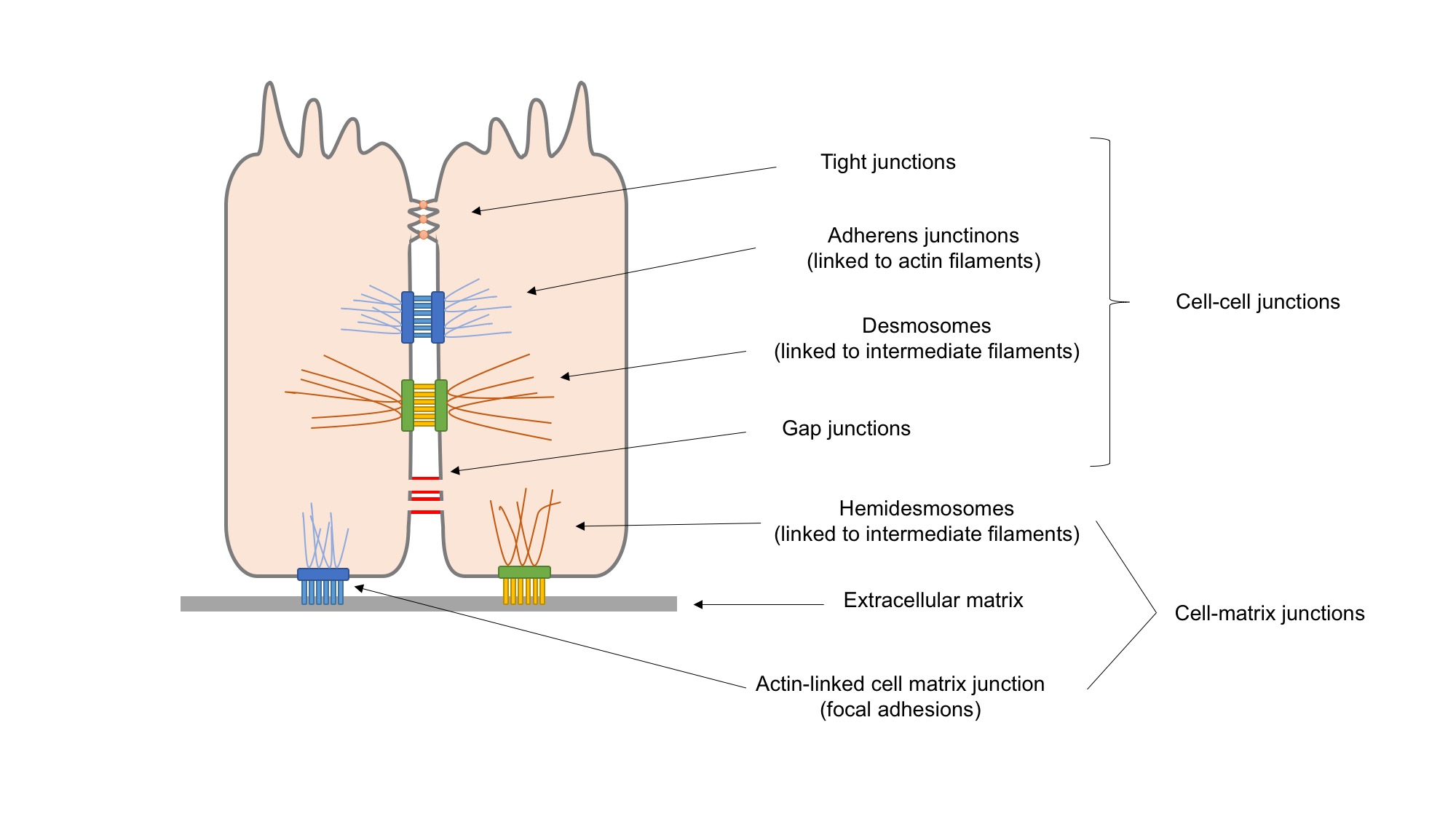|
ADRM1
Proteasomal ubiquitin receptor ADRM1 is a protein that in humans is encoded by the ''ADRM1'' gene. Recent evidences on proteasome complex structure confirmed that the protein encoded by gene ''ADRM1'', also known in yeast as 26S Proteasome regulatory subunit Rpn13 (systematic nomenclature for proteasome subunits), is a subunit of 19S proteasome complex. Gene The gene ''ADRM1'' encodes one of the non-ATPase subunits of the 19S regulator base, subunit Rpn13. The human PSMD4 gene has 10 exons and locates at chromosome band 20q13.33.The human protein Proteasomal ubiquitin receptor ADRM1 is 42 kDa in size and composed of 407 amino acids. The calculated theoretical pI of this protein is 4.95. Structure The protein encoded by this gene is an integral plasma membrane protein which promotes cell adhesion. The encoded protein is thought to undergo O-linked glycosylation. Expression of this gene has been shown to be induced by gamma interferon in some cancer cells. Two transcript var ... [...More Info...] [...Related Items...] OR: [Wikipedia] [Google] [Baidu] |
Protein
Proteins are large biomolecules and macromolecules that comprise one or more long chains of amino acid residues. Proteins perform a vast array of functions within organisms, including catalysing metabolic reactions, DNA replication, responding to stimuli, providing structure to cells and organisms, and transporting molecules from one location to another. Proteins differ from one another primarily in their sequence of amino acids, which is dictated by the nucleotide sequence of their genes, and which usually results in protein folding into a specific 3D structure that determines its activity. A linear chain of amino acid residues is called a polypeptide. A protein contains at least one long polypeptide. Short polypeptides, containing less than 20–30 residues, are rarely considered to be proteins and are commonly called peptides. The individual amino acid residues are bonded together by peptide bonds and adjacent amino acid residues. The sequence of amino acid resid ... [...More Info...] [...Related Items...] OR: [Wikipedia] [Google] [Baidu] |
Gene
In biology, the word gene (from , ; "... Wilhelm Johannsen coined the word gene to describe the Mendelian units of heredity..." meaning ''generation'' or ''birth'' or ''gender'') can have several different meanings. The Mendelian gene is a basic unit of heredity and the molecular gene is a sequence of nucleotides in DNA that is transcribed to produce a functional RNA. There are two types of molecular genes: protein-coding genes and noncoding genes. During gene expression, the DNA is first copied into RNA. The RNA can be directly functional or be the intermediate template for a protein that performs a function. The transmission of genes to an organism's offspring is the basis of the inheritance of phenotypic traits. These genes make up different DNA sequences called genotypes. Genotypes along with environmental and developmental factors determine what the phenotypes will be. Most biological traits are under the influence of polygenes (many different genes) as well as g ... [...More Info...] [...Related Items...] OR: [Wikipedia] [Google] [Baidu] |
Proteasome
Proteasomes are protein complexes which degrade unneeded or damaged proteins by proteolysis, a chemical reaction that breaks peptide bonds. Enzymes that help such reactions are called proteases. Proteasomes are part of a major mechanism by which cells regulate the concentration of particular proteins and degrade misfolded proteins. Proteins are tagged for degradation with a small protein called ubiquitin. The tagging reaction is catalyzed by enzymes called ubiquitin ligases. Once a protein is tagged with a single ubiquitin molecule, this is a signal to other ligases to attach additional ubiquitin molecules. The result is a ''polyubiquitin chain'' that is bound by the proteasome, allowing it to degrade the tagged protein. The degradation process yields peptides of about seven to eight amino acids long, which can then be further degraded into shorter amino acid sequences and used in synthesizing new proteins. Proteasomes are found inside all eukaryotes and archaea, and in some ... [...More Info...] [...Related Items...] OR: [Wikipedia] [Google] [Baidu] |
Integral Membrane Protein
An integral, or intrinsic, membrane protein (IMP) is a type of membrane protein that is permanently attached to the biological membrane. All ''transmembrane proteins'' are IMPs, but not all IMPs are transmembrane proteins. IMPs comprise a significant fraction of the proteins encoded in an organism's genome. Proteins that cross the membrane are surrounded by annular lipids, which are defined as lipids that are in direct contact with a membrane protein. Such proteins can only be separated from the membranes by using detergents, nonpolar solvents, or sometimes denaturing agents. Structure Three-dimensional structures of ~160 different integral membrane proteins have been determined at atomic resolution by X-ray crystallography or nuclear magnetic resonance spectroscopy. They are challenging subjects for study owing to the difficulties associated with extraction and crystallization. In addition, structures of many water-soluble protein domains of IMPs are available in the Prote ... [...More Info...] [...Related Items...] OR: [Wikipedia] [Google] [Baidu] |
Cell Adhesion
Cell adhesion is the process by which cells interact and attach to neighbouring cells through specialised molecules of the cell surface. This process can occur either through direct contact between cell surfaces such as cell junctions or indirect interaction, where cells attach to surrounding extracellular matrix, a gel-like structure containing molecules released by cells into spaces between them. Cells adhesion occurs from the interactions between cell-adhesion molecules (CAMs), transmembrane proteins located on the cell surface. Cell adhesion links cells in different ways and can be involved in signal transduction for cells to detect and respond to changes in the surroundings. Other cellular processes regulated by cell adhesion include cell migration and tissue development in multicellular organisms. Alterations in cell adhesion can disrupt important cellular processes and lead to a variety of diseases, including cancer and arthritis. Cell adhesion is also essential for inf ... [...More Info...] [...Related Items...] OR: [Wikipedia] [Google] [Baidu] |
Glycosylation
Glycosylation is the reaction in which a carbohydrate (or 'glycan'), i.e. a glycosyl donor, is attached to a hydroxyl or other functional group of another molecule (a glycosyl acceptor) in order to form a glycoconjugate. In biology (but not always in chemistry), glycosylation usually refers to an enzyme-catalysed reaction, whereas glycation (also 'non-enzymatic glycation' and 'non-enzymatic glycosylation') may refer to a non-enzymatic reaction (though in practice, 'glycation' often refers more specifically to Maillard-type reactions). Glycosylation is a form of co-translational and post-translational modification. Glycans serve a variety of structural and functional roles in membrane and secreted proteins. The majority of proteins synthesized in the rough endoplasmic reticulum undergo glycosylation. Glycosylation is also present in the cytoplasm and nucleus as the ''O''-GlcNAc modification. Aglycosylation is a feature of engineered antibodies to bypass glycosylation. Fi ... [...More Info...] [...Related Items...] OR: [Wikipedia] [Google] [Baidu] |
Gamma Interferon
Interferon gamma (IFN-γ) is a dimerized soluble cytokine that is the only member of the type II class of interferons. The existence of this interferon, which early in its history was known as immune interferon, was described by E. F. Wheelock as a product of human leukocytes stimulated with phytohemagglutinin, and by others as a product of antigen-stimulated lymphocytes. It was also shown to be produced in human lymphocytes. or tuberculin-sensitized mouse peritoneal lymphocytes challenged with Mantoux test (PPD); the resulting supernatants were shown to inhibit growth of vesicular stomatitis virus. Those reports also contained the basic observation underlying the now widely employed IFN-γ release assay used to test for tuberculosis. In humans, the IFN-γ protein is encoded by the ''IFNG'' gene. Through cell signaling, IFN-γ plays a role in regulating the immune response of its target cell. A key signaling pathway that is activated by type II IFN is the JAK-STAT sign ... [...More Info...] [...Related Items...] OR: [Wikipedia] [Google] [Baidu] |
Cancer Cell
Cancer cells are cells that divide continually, forming solid tumors or flooding the blood with abnormal cells. Cell division is a normal process used by the body for growth and repair. A parent cell divides to form two daughter cells, and these daughter cells are used to build new tissue or to replace cells that have died because of aging or damage. Healthy cells stop dividing when there is no longer a need for more daughter cells, but cancer cells continue to produce copies. They are also able to spread from one part of the body to another in a process known as metastasis. Classification There are different categories of cancer cell, defined according to the cell type from which they originate. * Carcinoma, the majority of cancer cells are epithelial in origin, beginning in a tissue that lines the inner or outer surfaces of the body. * Leukaemia, originate in the tissues responsible for producing new blood cells, most commonly in the bone marrow. * Lymphoma and myeloma, d ... [...More Info...] [...Related Items...] OR: [Wikipedia] [Google] [Baidu] |
PSMD2
26S proteasome non-ATPase regulatory subunit 2, also as known as 26S Proteasome Regulatory Subunit Rpn1 (systematic nomenclature), is an enzyme that in humans is encoded by the ''PSMD2'' gene. Structure Gene expression The gene ''PSMD2'' encodes a non-ATPase subunit of the 19S regulator base, which is responsible for substrate recognition and binding. The gene ''PSMD2'' encodes one of the non-ATPase subunits of the 19S regulator lid. In addition to participation in proteasome function, this subunit may also participate in the TNF signalling pathway since it interacts with the tumor necrosis factor type 1 receptor. A pseudogene has been identified on chromosome 1. The human ''PSMD2'' gene has 23 exons and locates at chromosome band 3q27.1. The human protein 26S proteasome non-ATPase regulatory subunit 2 is 100 kDa in size and composed of 909 amino acids. The calculated theoretical pI of this protein is 5.10. Two expression isoforms are generated by alternative splicing, in which e ... [...More Info...] [...Related Items...] OR: [Wikipedia] [Google] [Baidu] |
PSMD1
26S proteasome non-ATPase regulatory subunit 1, also as known as 26S Proteasome Regulatory Subunit Rpn2 (systematic nomenclature), is a protein that in humans is encoded by the ''PSMD1'' gene. This protein is one of the 19 essential subunits that contributes to the complete assembly of 19S proteasome complex. Structure Gene expression The gene ''PSMD1'' encodes the largest non-ATPase subunit of the 19S regulator base, which is responsible for substrate recognition and binding. The human PSMD1 gene has 25 exons and locates at chromosome band 2q37.1. The human protein 26S proteasome non-ATPase regulatory subunit 1 is 106 kDa in size and composed of 953 amino acids. The calculated theoretical pI of this protein is 5.25. An alternative splicing during gene expression generates an isoform of the protein in which the amino acid sequence from 797-827 is missing. Complex assembly 26S proteasome complex is usually consisted of a 20S core particle (CP, or 20S proteasome) and one or t ... [...More Info...] [...Related Items...] OR: [Wikipedia] [Google] [Baidu] |
PSMD4
26S proteasome non-ATPase regulatory subunit 4, also as known as 26S Proteasome Regulatory Subunit Rpn10 (systematic nomenclature), is an enzyme that in humans is encoded by the ''PSMD4'' gene. This protein is one of the 19 essential subunits that contributes to the complete assembly of 19S proteasome complex. Gene The gene ''PSMD4'' encodes one of the non-ATPase subunits of the 19S regulator base, subunit Rpn10. Pseudogenes have been identified on chromosomes 10 and 21. The human ''PSMD4'' gene has 10 exons and locates at chromosome band 1q21.3. Protein The human protein 26S proteasome non-ATPase regulatory subunit 4 is 41 kDa in size and composed of 377 amino acids. The calculated theoretical pI of this protein is 4.68. An alternative splicing during gene expression generates an isoform of the protein in which the amino acid sequence from 269 to 377 is missing while the amino sequence between 255 and 268 is replaced from DSDDALLKMTISQQ to GERGGIRSPGTAGC. Complex assem ... [...More Info...] [...Related Items...] OR: [Wikipedia] [Google] [Baidu] |





